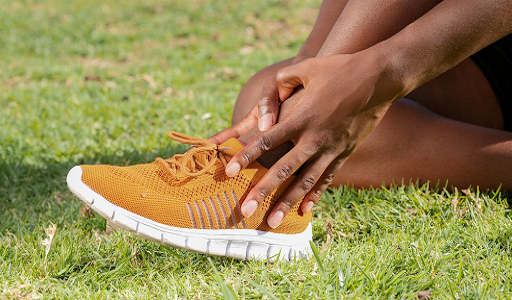Hurting your ankle can be a painful and frustrating experience, but proper care is essential in order to ensure that your recovery period is as short as possible. It’s important to remember that, although there is no one-size-fits-all approach to dealing with an ankle injury, there are some key things to keep in mind so that you can help your body heal. Here are the top 6 things you should remember when dealing with a hurt ankle.
1. Rehabilitation Is Key
The most important thing to remember when dealing with a hurt ankle is that rehabilitation is the key to recovery. Depending on the severity of your injury, rehab may include exercises such as stretching, range-of-motion exercises, and strength training. According to Science Of Rehab, it’s important to incorporate these exercises into your daily routine in order to help the muscles around your ankle to heal more quickly and efficiently. It’s important to follow your doctor or physical therapist’s instructions and do the exercises as prescribed. Also, don’t push yourself too hard; take frequent breaks and listen to your body.
2. Wear a Brace or Compression Sleeve
A brace or compression sleeve can help to keep your ankle stable and reduce swelling. The type of brace you should use depends on the severity of your injury, so it’s important to talk with your doctor first before investing in one. Braces or sleeves that stretch around the foot and lower leg are particularly helpful for mild sprains as they provide additional support to the ligaments and muscles in the area. Additionally, compression sleeves are a great option for those with more serious ankle injuries, as they keep the joint warm and reduce swelling.
3. Rest and Ice Your Ankle
Immediately after an ankle injury, rest and ice your ankle to reduce swelling. Keep the injured ankle elevated with a pillow or other support and apply an ice pack for 15 minutes on and then off every hour. Do not leave the ice pack on for more than fifteen minutes at a time as it can cause tissue damage. You should also wear a compression bandage to help limit swelling. Keeping the injured area compressed will also provide some pain relief. Also, avoid using heat on your ankle until the swelling has gone down.
4. Wear Comfortable Shoes
Adapting to a hurt ankle can be difficult, and an uncomfortable shoe can make it even harder. Make sure to wear supportive shoes that fit properly, as this will help reduce the amount of stress placed on your injured ankle. Furthermore, comfortable shoes will help prevent any further injury or pain from occurring. If you are unsure what kind of shoe might be best for you, consult with a doctor who specializes in foot and ankle care. It’s important to have the correct type of shoes for your injury.
5. Monitor Your Symptoms
When dealing with a hurt ankle, it’s important to monitor your symptoms carefully. If you experience increased pain or swelling, this may be an indication of further damage and should be examined by a medical professional. Additionally, pay attention to any numbness or tingling in the area which could indicate nerve damage. Lastly, note any discoloration in the skin around the ankle and consult your doctor if these changes persist. If any of these symptoms occur, it’s important to seek medical advice as soon as possible. Also, be sure to keep a record of any pain or other changes you may experience in order to provide your doctor with the best information about your condition.
6. Follow Your Doctor’s Advice
No matter how bad the pain is, or how much better you think you are feeling, it’s always best to follow your doctor’s advice. If they tell you to rest for a few days, make sure that you do. Taking an extra day off could be what makes all the difference between a speedy recovery and prolonged suffering. Likewise, if they recommend physical therapy or crutches, don’t try to tough it out on your own; this could lead to further damage and longer healing times. Your doctor knows best – so trust them! With their help and guidance, you should be back up and running in no time.
A hurt ankle can be a difficult injury to manage, but with the proper care and attention, you can make sure that your recovery process is smooth and successful. Remember to consult your doctor first before investing in any equipment or taking any steps on your own, and make sure that you are following all of their advice. With the right strategy, you can be back up and running in no time!
